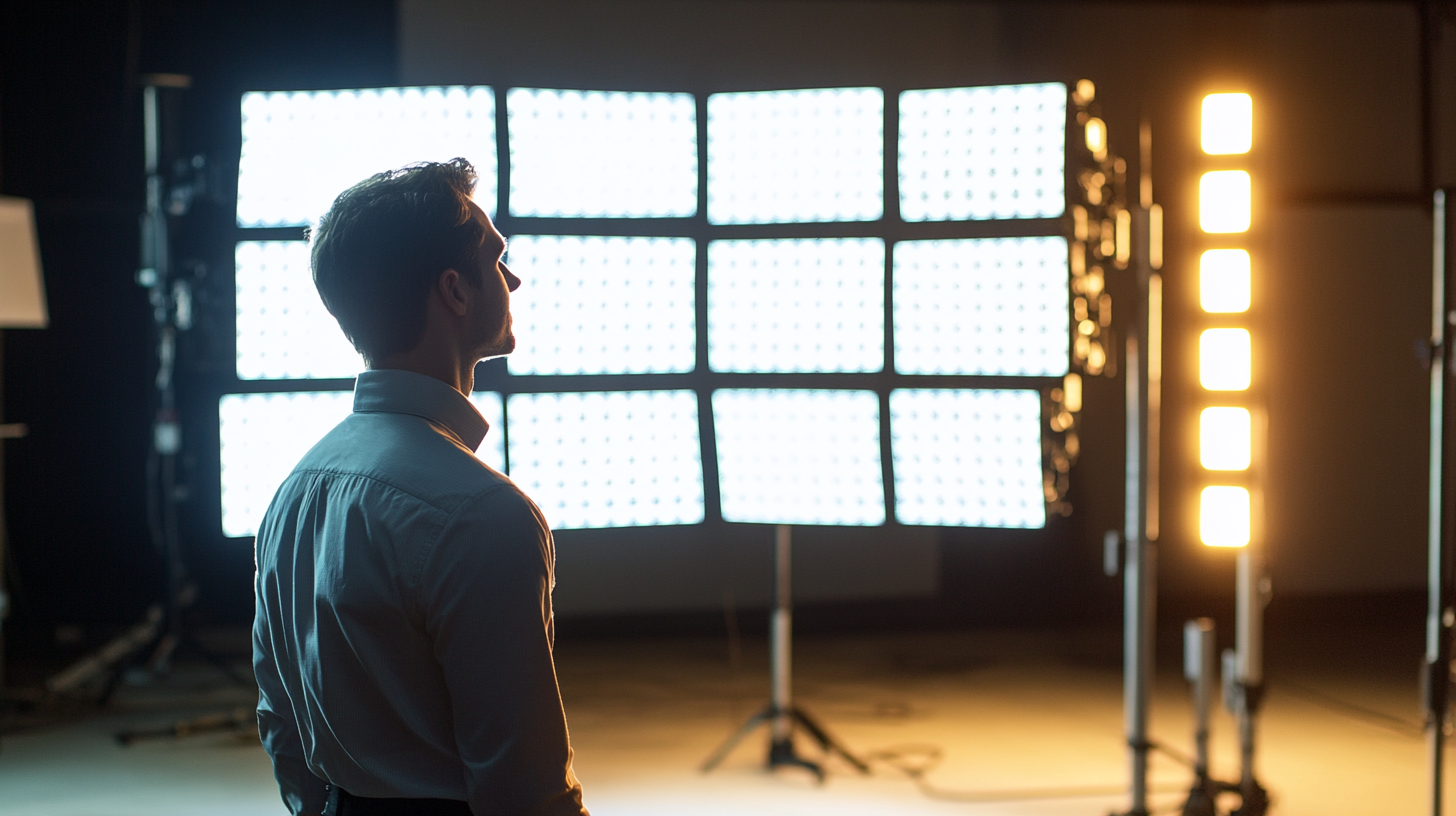Unleashing Innovation in Light Source Technologies for Global Buyers
In the rapidly changing landscape of technology, the demand for innovative light source solutions is a key focal point among global buyers. While industries seek to be increasingly efficient, they also strive to decrease their environmental impact and improve product quality to the highest levels. So the demand for cutting-edge light source technology is on an equally robust rise. From energy-conscious LEDs to high-end laser systems, the realm of light sources is riding the innovations wave, touching on applications for health and entertainments alike. This piece tries to explain all the transformations happening in light source technology and what business buyers need to cultivate in order to be successful within this dynamic market scene.
Looking into the history of light source technologies, what we see is that the latest technologies are not just different products but are also creating the biggest starting blocks for continuing business discussions of how these changes are going to introduce sustainability in about every industry possible. It is no longer enough to sell a great product with equally good performance and exploring potential new and inclusive opportunities. At the end of the day, this blog will enlighten the key trends, challenges, and opportunities in this market, giving buyers an idea about walking in knowledge to good decisions concerning the future of light technology in illumination.

Exploring the Latest Trends in Light Source Technology Innovation
Work on it. Give your input. The new advancement in light source technologies has metamorphosed innumerable industries and the standard of living for a consumer across the globe. In our further discussion on trends in innovation, energy-efficient lighting is a topic of prime concern. Due to growing pressure over sustainability and energy consumption, manufacturers have been gaining faith in LED technology, which presents such an attractive prospect in efficiency while being a great measure for curtailing carbon footprints. These modern light sources find applications from residential to commercial usefulness and thus promise to pave their benefits all over the planet. Group of trendsetters into light source technology: Smart integration is another trend that fits into light source technology. With the arrival of smart homes and IoT, intelligent lighting systems can be remotely controlled, programmed for tension and mood, and synchronized for operation with other devices. Such customization and control enhance user experience, but this trend also encourages greater energy savings, and as a result, these innovations are rapidly being adopted all over. Along with this, advanced materials such as OLEDs and quantum dots are turning the corner towards enhancing the future. These technologies promise a much wider color gamut, flexibility, and transparency; in other words, they push the lighting application as far as it can go. The light source innovations that describe our future will be those onset by soon-to-be-resident technologies, which is why knowledge of these trends will be vital for the full realization of light source innovations in our lives.

Key Factors Driving Demand for Advanced Light Sources Globally
An unending slew of factors continuously reshaping the global market promote light source demand across industries. One of the key drivers is an ever-increasing demand for energy-efficient solutions. With sustainability treated as a critical issue by industries and consumers alike, it has become incumbent upon companies to seek technologies that minimize energy use while maintaining or improving performance. Innovations like LED and OLED technologies have complemented this need by providing brighter and longer-lasting solutions with greatly reduced energy expenses.
An equally important factor is the broadened application fields for advanced light sources, such as healthcare, automobile, and entertainment. For instance, precision lighting solutions that are critical for procedures and diagnostics spawn demand for specialized light sources that can improve healing. The automotive sector is moving toward sophistication in lighting systems to improve safety and aesthetics as well, such as adaptive headlights and ambient lighting. The versatility of applications ensures that the advanced light source market is forever dynamic and growing.
Technological advances in manufacturing techniques also facilitate and reduce the cost of producing good quality light sources. New manufacturing techniques and materials help reduce the barriers to innovations in this field and welcome new players to come up with interesting products. This flow of innovation causing competition and better solutions for consumers worldwide, in turn, gives them more choice and better performance. When merged, the discussed drivers of advanced light source demand would enrich it for considerable growth across the globe in token of the demonstrated power of innovation to tackle salient modern-day challenges.

Sustainability Initiatives in Light Source Manufacturing and Innovation
Sustainability is a prime concern in the manufacturing and advancement of light sources. Global end-users increasingly demand environmentally respectful products, and manufacturers need to respond. This development is not merely a trend but rather a critical response to pressing environmental demands, causing companies to rethink and revise their production processes. The industry is now taking a holistic approach, integrating an entire life cycle review of its product range, from energy-saving lighting to using sustainable materials, to aim at reducing its carbon footprint.
The sustainability initiatives involving light source technologies are considering the entire life cycle of the product. Innovative practices are being introduced, such as the circular economy, where products are designed for reuse, recycling, or regeneration. The rapid development of LED technology has also delivered longevity and energy-efficient lighting to the market. Not only are these useful in the disposal of waste, but they are also considered further products for reducing energy consumption. This appeals to eco-aware consumers and businesses.
To increase their credibility, manufacturers are entering partnerships with environmental bodies and engaging in certification schemes that prove their sustainability claims. In so doing, they will not only establish credibility within the market but also help in achieving global sustainability goals. The focus on transparent and accountable sourcing and manufacturing processes highly reinforces this commitment, putting the industry on the cusp of responsible innovation, entering a position of leadership in sustainable development. The future for light source technologies looks bright with avenues of sustainable and innovative practices that ensure the needs of the present without compromising the well-being of future generations.

Enhancing Performance: Breakthroughs in Light Source Efficiency
The demand for efficacious technologies for light sources has indeed grown multifold in the rapidly advancing technological environment. Efficient breakthroughs in light sources have completely changed the approach of various industries toward lighting solutions, paving the way for sustainable cost-effective practices. Such innovations pave the way for quality illumination while reducing energy consumption.
The illumination industry redefined levels of performance due to more recent developments in smart LED systems. These energy systems use intelligent controls that adjust brightness and color temperature to changes in environmental characteristics. Energy is saved, but at the same time, there is an enhancement in the performance and operational costs of the system. Further, the incorporation of renewable energy sources in the light installations enhances this efficiency even further, giving a greener choice that many customers in the worldwide market are finding increasingly attractive.
With the continuing dynamics of the industry, manufacturers are putting efforts into the advanced materials and designs for light sources towards their performance and longevity. OLED technology and high-efficiency phosphors are inventions that leapfrog toward longer lifespan and best color rendition. As these technologies become more readily available, global buyers are enabled to make informed decisions that can consider not only current lighting needs but also aim at larger targets of sustainability.
Future Prospects: The Role of AI and IoT in Light Source Development
AI and IoT integration into light source technologies will surely bring about a revolution. With smarter solutions from different industries gaining tremendous momentum, AI-based analytics will play a massive role in driving the optimization of light sources for various applications. By making the best use of machine learning algorithms, manufacturers will consequently get a chance to better the design of LEDs and lasers so as to have products that consume lesser energy and yet perform better with a longer lifespan.
Furthermore, IoT capability could provide an unmatched level of integration and control over lighting systems. The light sources, coupled with smart sensors and devices, will be nurtured into much larger ecosystems in order to achieve real-time monitoring and adjust the entire system based on user preferences and environmental conditions. Such an AI-IoT alliance will prepare the ground for smart cities that are solutions for more than just illumination but provide dynamic capability to enhance urban life with security.
Hence forth, the conjoining of these technologies will be about widening the horizon for innovation and bringing the ecological footprint of lighting solutions down. These AI technologies are gaining ways through radar coverage and will give light into the need of sustainability that will operationalize intelligent and green lighting concepts towards greater research and development. The future of light source technologies has nothing to do with illumination only; this association of two outstanding sophisticated technologies—AI and IoT—has the potential to create intelligent, less static environments.
